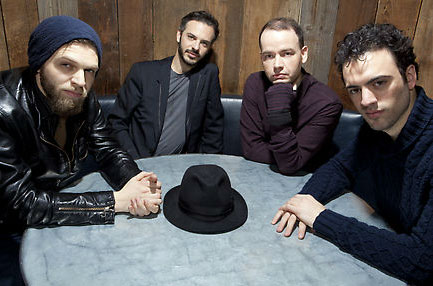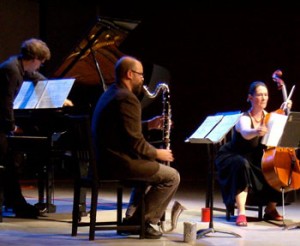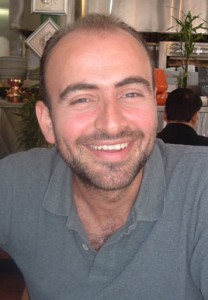People love tragedy, at least, in the literary sense, and Mozart and Schubert’s early deaths were certainly tragic. The death of the talented gay and black composer Julius Eastman (1940-1990) has many of the same elements of classic tragedy. With Eastman, who was also apparently self destructive in both his professional and private life, those elements included crack addiction homelessness, and dying alone in a Buffalo New York hospital of cardiac arrest. It is certainly a juicy story. But none of this would matter if his work didn’t speak to people, and Eastman’s music, which was performed by Italian composer and pianist Luciano Chessa, Sarah Cahill and four other pianists, and two singers recently at the Berkeley Art Musician, spoke loud and clear.
Eastman’s case was certainly aided and abetted by the unique acoustics of Mario Ciampi’s concrete Art Brut structure which served Steve Reich and Musicians equally well when they performed and recorded his Four Organs and Phase Patterns there in 1970 for a long defunct Shandar LP. Eastman’s focus on the materiality of sound itself seemed to be both text and subtext of his music here. Two a capella pieces exploited this materiality in its most basic form. “Our Father” (1989), sung by tenor Kevin Baum and bass Richard Mix was a powerful evocation of the contrast between the eternal present–the open fifths they landed on–and the fleeting present of its shifting chromatic writing. The solo “Prelude to the Holy Presence of Joan D’Arc ” (c. 1981) (the succeeding “Holy Presence,” for ten cellos, is on www.youtube.com paired with Dreyer’s silent masterpiece) sounded like a starkly reiterative “De Profundis” with shades of the Stein/Thomson opera Four Saints in Three Acts (1927-1934) in some of its intervals, mood, and text –“St Margaret … ” and Mix’s voice was so powerful that it seemed to be coming out of the floor, and not just because I was seated two yards away.
The two large scale pieces for six pianos which rounded out the program were equally powerful, though their political agendas were hard to discern. All music lives or dies according to its sound, and Evil Nigger and Gay Guerilla (both 1979) were stunningly communicative without clearly discernible agendas, and they were subtle, vigorous, and highly imaginative throughout. The piano band–which also included Regina Schaffer, Chris Brown, Joseph M. Colombo, and Dominique Leone–were also kept in time by the cells on their arranged-in-a-closed circle Yamaha uprights which gave them parameters–say “1:10- 1: 30 seconds “–and the performative aspect of “new” or any other kind of music is what draws people in. The beating patterns here were regular and non-regular; the timbres opposed, unified, diffused, dissolved. Time present, time elastic moving in and out of focus–prominence–in time. And it was a pleasure to see Leone’s reiterated G naturals up close, and Chessa having lots of fun with his part. The music steady, ritualistic–the returning seven note cadence figure in Evil Nigger–fresh, and always surprising .
And the sound? The pianos, separately miked from the back brought one this side of heaven.
As many of you know, the composer Mary Jane Leach has been instrumental in getting Eastman work into the public eye.




 Putting a musical program together is always a challenge, but it’s one thing on paper, and another live, in front of people.
Putting a musical program together is always a challenge, but it’s one thing on paper, and another live, in front of people. 